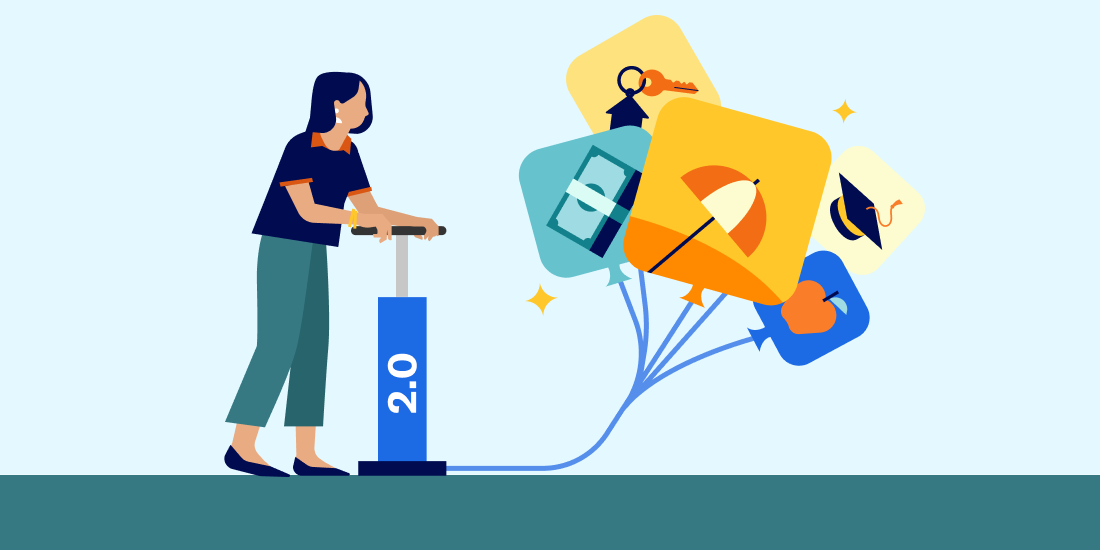How to use SECURE 2.0 to enhance your total rewards program
Learn how the SECURE 2.0 Act can have a positive impact on your total rewards program. Plus, follow our checklist for a smooth implementation.

Learn how the SECURE 2.0 Act can have a positive impact on your total rewards program. Plus, follow our checklist for a smooth implementation.
Leading HR teams take a strategic approach to ensuring their employees see and feel the value of their total rewards programs. In a competitive business environment, total rewards—the monetary and non-monetary benefits you offer—can be the difference maker for attracting and retaining top talent.
Optimize how you promote your total rewards program
The SECURE 2.0 Act gives employers an opportunity to create even stronger 401(k) and retirement benefit offerings. Some employers may hesitate at the opportunity, fearing operational demands or added costs. But strategic leaders can capitalize on the new law.
We encourage companies to view SECURE 2.0 as a chance to implement new, modern 401(k) features and to highlight the value of their 401(k) benefit as part of their total rewards program.
Benefits that make a difference
Although many SECURE 2.0 provisions are mandatory, the Act gives employers some implementation flexibility along with some optional provisions. Review provisions to see how they could be leveraged to increase the value of your 401(k) program.
A sample of the provisions that you may find add value to your total rewards program include:
- 401(k) match on student loan payments (Optional): Consider your current and ideal future employees. If it’s common for them to have student loan debt, this provision can help them kickstart their retirement savings when they otherwise may not have been able to save.
- Automatic enrollment (Required for plans established after 12/29/22): Data has shown that 401(k) participation—and employee savings—dramatically increases when you automatically enroll employees, rather than requiring them to opt in. Plus, because automatic enrollment makes opening a 401(k) the default, the enrollment process can be streamlined for all eligible employees.
- Automatic escalation (Required for plans established after 12/29/22): Adding to automatic enrollment is the automatic escalation provision, requiring employers to increase employee contributions by 1% per year to at least 10% (but no more than 15%). This escalation will help employees get closer to the 10% to 15% mark that many financial experts recommend as the desired retirement savings rate. Your company can use this mandatory provision as an opportunity to provide financial education to employees around adequate retirement savings.
- Long-term, part-time employee eligibility (Required): This is a mandatory provision that could have a large impact depending on your employee base. If you find that you have a large portion of employees that fit into this group, you can clearly communicate the benefit these employees will receive.
Communication is the key to success
Communication drives the success of the 401(k) plan changes you make due to SECURE 2.0. It’s a big opportunity to engage with your employees. Rather than simply rolling out operational changes and sending mandatory paperwork to employees, take the time to explain how these changes are designed to help employees and their families. Think of this not as an operational change to your 401(k), but rather as a strategic change to your total rewards program.
Pro tip: As you implement provisions from the SECURE 2.0 Act, it’s also an opportunity for you to re-educate your workforce on all benefits you provide. Take the time to develop an internal communications plan for your total rewards program. Think holistically and show employees the total value of their benefits and compensation.
Checklist: Leveraging SECURE 2.0 in your total rewards program
As you implement SECURE 2.0 provisions, build out a checklist to make sure you consider all relevant details. Here’s a list to get you started.
- Talk with your 401(k) plan provider: Understand how they are operationalizing each provision and what that means for your processes.
- Determine which optional provisions you will implement: Research each provision, consider surveying employees to measure demand, and conduct a budget analysis.
- Determine how you will implement mandatory provisions: Work with your management team to decide how to implement mandatory provisions such as automatic enrollment and escalation.
- Provide pre-launch communication to employees: Explain that positive changes are coming and what to expect.
- Distribute launch communication to employees: Hold meetings and distribute materials explaining new benefits including their value, timing of changes, and how to access benefits. Consider using a formal “total rewards statement” to show the value to employees.
- Communicate to prospective employees: Update total rewards listings on your website, job descriptions, and other public-facing locations to attract your ideal employees.
- Measure adoption and value: Working with your 401(k) provider, measure the adoption of your 401(k) features and use the data to communicate value to stakeholders including employees, management, and your board of directors.
For a full overview of what to consider when building out a 401(k) plan, check out our Plan Design article.
Our modern 401(k) platform meets your modern total rewards program
At Betterment at Work, we’ve built a modern 401(k) platform with an all-in-one admin dashboard and payroll integrations to save time managing your plan. Not only are we a leading provider of modern financial benefits, but our team of experts is by your side providing topical educational content.
We also help you take your 401(k) plan a step further with financial wellness features. Support your employees with 1:1 Financial Coaching, 529 Plans, and our Student Loan Management platform, including the option to easily provide your employees 401(k) matches on qualified student loan payments.

